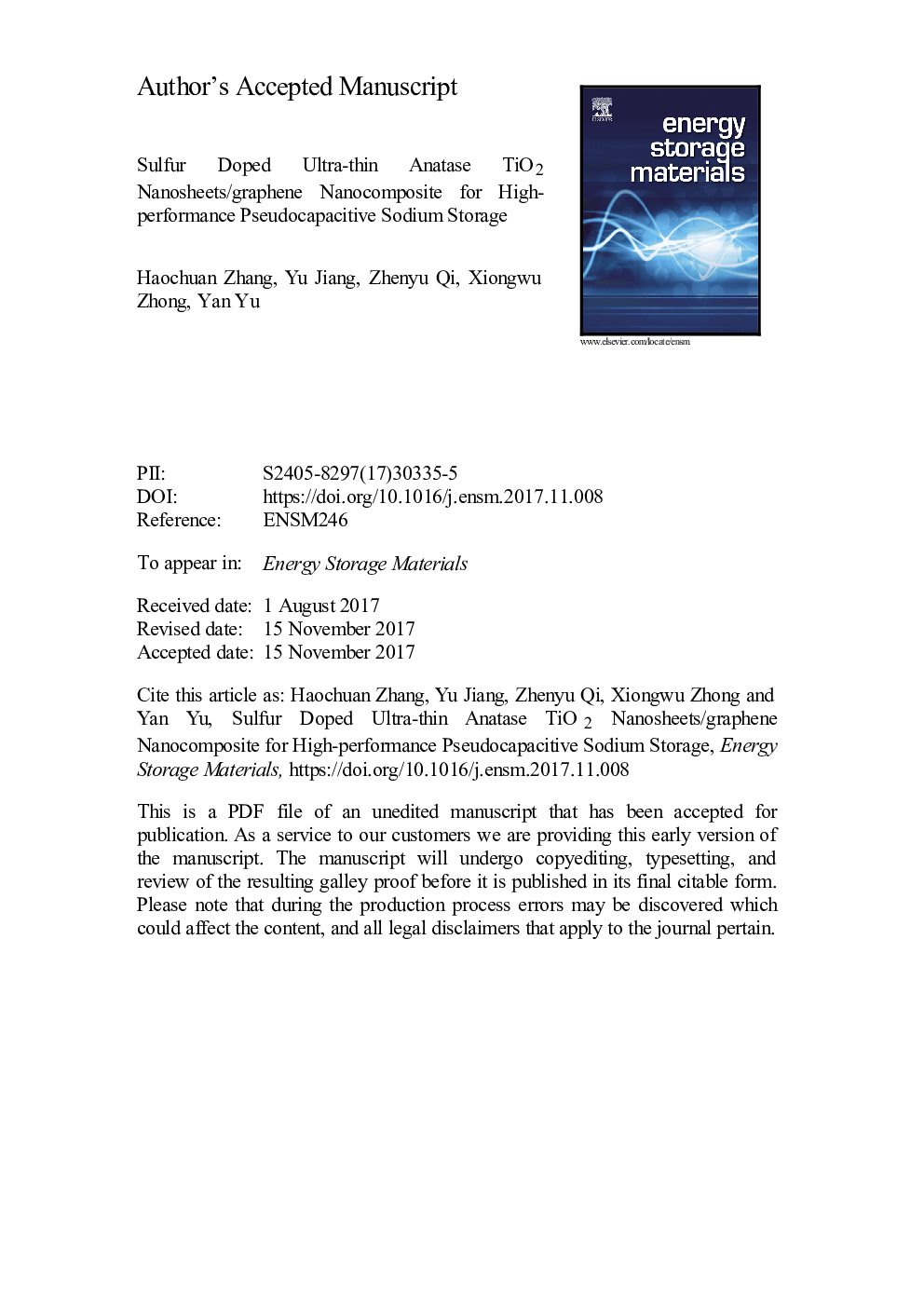| Article ID | Journal | Published Year | Pages | File Type |
|---|---|---|---|---|
| 7962793 | Energy Storage Materials | 2018 | 16 Pages |
Abstract
Sodium-ion battery (NIBs) has emerged as a promising low-cost option for large-scale electricity storage applications compared with traditional lithium-ion battery. However, developing anode materials with robust rate capability and long cycle life is even more challenging for sodium-based energy storage devices than lithium-based ones. Here, we report a unique nanocomposite architecture of sulfur doped atomically thin, micro-sized anatase TiO2 nanosheets anchored onto graphene sheets (S-TiO2/rGO). The high surface area of two-dimensional structure, graphene preservation networks and rich Ti3+/oxygen vacancy defects induced by sulfur doping endow S-TiO2/rGO electrode with excellent reversibility and fast kinetics. The electrode delivers a high capacity of 153Â mAh/g at a rate of 20Â C (6700Â mA/g) without evident capacity loss even after 8000 cycles. Further kinetics analysis reveals that the high-rate performance stems from pseudocapacitive process rendered by the 2D-morphology and vacancy-rich TiO2 nanosheets.
Related Topics
Physical Sciences and Engineering
Energy
Fuel Technology
Authors
Haochuan Zhang, Yu Jiang, Zhenyu Qi, Xiongwu Zhong, Yan Yu,
